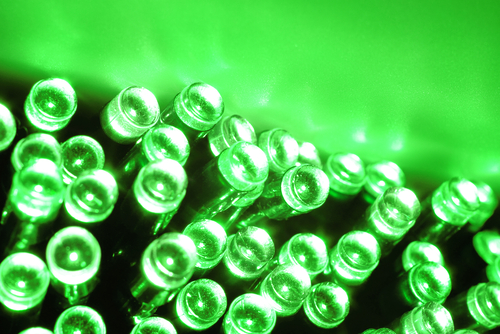 |
You have heard it before – lighting is one of the greatest energy wasters there is. If your facility is still using other-than light-emitting diode (LED) lighting, here are some facts to consider:
- LED lighting uses at least 75% less energy than incandescent
- LED lifetimes exceed incandescent lighting by 35-50% and last2-5 times longer than fluorescent lighting
- LED lighting produces less heat, saving on cooling costs
- LED lighting is guaranteed to last a minimum of three years, is more durable then old lighting, and comes in a variety of models for dimming, outdoor use, etc.
Unfortunately, some early LED lights did not hold up as claimed, and did not offer adequate lighting compared to the incandescent and fluorescent lights they replaced. Thanks to the Environmental Protection Agency’s (EPA’s) Energy Star program, however, consumers can now chose Energy Star qualified LED products that meet or exceed brightness, color quality, lifespan, and other claims. These products also do not draw power when in the off state, which is an added benefit for businesses with many individual light sources.
Learn a review of the current administration’s climate change policy and much more during our in-depth webinar on February 26, 2014.
Register Now
For businesses that must provide lighted exit signage, substantial GHG reductions can also be realized simply by switching to Energy Star qualified signs. Each of these fixtures alone can save up to $10 per year in energy costs while eliminating as much as 500 pounds of GHG emissions.
Another no-brainer way to improve energy efficiency is through simple maintenance of heating, ventilating and air-conditioning (HVAC) system equipment. For example, do you remember the last time you changed the oil in your car? Sure you do, you have a windshield sticker that reminds you every day. But what about the filter in your HVAC system? With severe heat last summer and record-setting cold this winter, air conditioners and furnaces are already working overtime and have to work even harder when the filter is dirty. Monthly furnace filter changes cost a few dollars at the hardware store but immediately provide cleaner indoor air and lower energy use, while helping to prolong the life of your HVAC system. Similarly, annual HVAC system checkups performed by a contractor can be scheduled to occur automatically and while costing a little up front, can have big payoffs on energy savings and system lifespan.
Regarding computer equipment, plenty of energy can be saved simply by clearing up a few common misconceptions about turning them on, off or leaving them in screen saver or sleep mode. First of all, it is not true that screen savers save energy. It is also not true that electronics last longer if they are never turned off, that idea is a holdover from the days of main frames. What is true, however, is that turning off machines will result in substantial energy savings.
Join us for an in-depth webinar on February 26. When our speakers, seasoned environmental professionals who have helped many companies develop and implement practical GHG management strategies, will provide participants with a straight-forward approach to establishing a process that not only meets regulatory requirements but also identifies potential cost-saving opportunities.
Second best is using the sleep or hibernate mode if your computer has one. According to the EPA, “approximately 95 percent of office monitors and 25 percent of office desktop computers have power management features enabled, saving more than 10 billion kWh per year and preventing greenhouse gas emissions equivalent to those from 15 million vehicles.”
Keep in mind that even when equipment is turned off, if it is still plugged in, it continues to draw a small “phantom” amount of energy. In fact, in the average home, which may utilize equipment similar to a small business, 75 percent of the electricity used by electronics is consumed when the equipment is turned off. The best solution to this is to unplug them all together or plug them into a power strip that can be turned on and off, blocking phantom power usage. Battery chargers are also big energy wasters because they are often left plugged in even though nothing is being charged and should always be unplugged or on a power strip when not in use.

One other energy-saving (and GHG reducing) tip small businesses can easily implement is to make sure that they unplugged all office equipment when they leave for the day. Most people don’t realize that even though a given machine maybe turned off, there is still electricity being wasted by having that machine plugged into the wall. I’ve even heard of some businesses saving over $100 per month on electricity bills by adopting this technique.